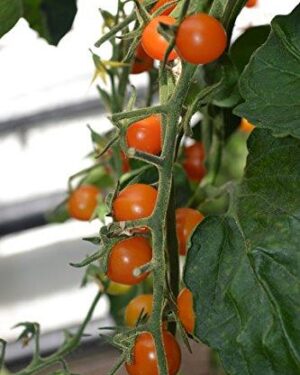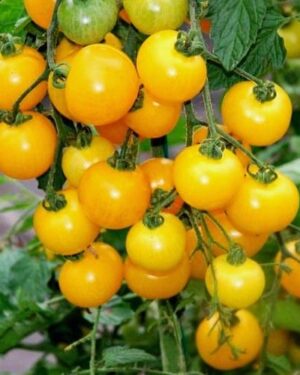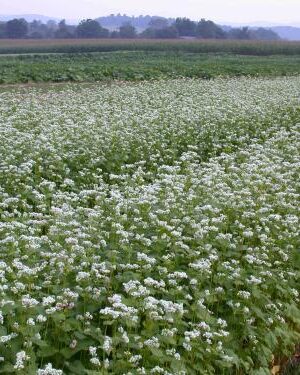Description
Tomato Rio Grande
Tomato Rio Grande. A vigorous bush variety forming meaty, firm, pear shaped deep red fruits averaging about 80-100g each in clusters. Perfect for cooking sauces, juicing and slicing. Good disease resistance. Mid-late. Determinate
Cultivation Advice For Tomato Rio Grande
- Choose well-draining, fertile soil with a slightly acidic to neutral pH (6.0-7.0).
- Prior to planting, amend the soil with organic matter such as compost to enhance fertility.
- Start Rio Grande tomato seeds indoors 6-8 weeks before the last expected frost.
- Transplant seedlings into the garden after the danger of frost has passed, ensuring proper spacing (18-24 inches apart).
- Provide full sunlight exposure for Rio Grande tomatoes, ensuring they receive at least 6-8 hours of direct sunlight daily.
- Maintain consistent soil moisture throughout the growing season. Water deeply and regularly, especially during dry periods
- Apply a layer of organic mulch around the base of the plants to conserve soil moisture, suppress weeds, and regulate soil temperature.
- Given that Rio Grande tomatoes may produce heavy clusters, provide sturdy support with stakes or cages to prevent branches from breaking
- Use a balanced, all-purpose fertilizer at planting and during the growing season. Adjust based on plant needs and soil conditions.
- Determine if Rio Grande is a determinate or indeterminate variety. Prune indeterminate types by removing suckers and lower foliage for improved air circulation.
- Regularly inspect for common tomato pests such as aphids, caterpillars, or whiteflies.
- Implement natural pest control methods or introduce beneficial insects to keep pest populations in check
- Water at the base of the plant to minimize the risk of fungal diseases. Mulching can also help prevent soil-borne diseases.
- Harvest Rio Grande tomatoes when they reach their full color and have a slightly soft feel. These tomatoes are typically elongated and have a rich flavor.
- Pair Rio Grande tomatoes with companion plants like basil, marigolds, or onions to deter pests and enhance growth.
- Consider growing Rio Grande tomatoes in containers with good drainage, especially if space is limited.
- Understand the growth habit of Rio Grande. Determinate varieties may not require as much pruning or support as indeterminate ones.
- Wait until the soil has warmed before transplanting seedlings to ensure optimal growth.
- Plant Rio Grande tomatoes after the soil has thoroughly warmed. These tomatoes thrive in warm temperatures.
- Water at the base of the plant to prevent water from splashing onto the foliage, reducing the risk of fungal diseases.
- Maintain a consistent watering schedule to prevent fluctuations in soil moisture.
- Regularly inspect the foliage for any signs of diseases or pests. Early detection allows for timely intervention.
- Given the potential for heavy fruit clusters, provide additional support for branches laden with tomatoes to prevent breakage.
- Harvest tomatoes when they reach their mature color and have a firm texture. Rio Grande tomatoes are known for their meaty texture and excellent flavor.
- Practice crop rotation to reduce the risk of soil-borne diseases. Avoid planting tomatoes in the same location every year.
- Install sturdy tomato cages around the plants early in the growing season to provide support as they mature.
- Implement organic pest control methods, such as introducing beneficial insects or using neem oil, to deter common tomato pests.
- In cooler climates, consider using season extension techniques like row covers to protect plants from late spring or early fall frost.
- Check if there are disease-resistant varieties of Rio Grande available. Opting for resistant varieties can contribute to overall plant health.
- In late summer, consider light pruning to improve air circulation and sunlight penetration, especially if the plant has dense foliage.
- Utilize a moisture meter to monitor soil moisture levels and adjust watering practices accordingly to prevent overwatering or underwatering.
- Explore natural mulching alternatives like straw or shredded leaves to maintain soil moisture and regulate temperature.
- Periodically amend the soil with organic matter to replenish nutrients and improve soil structure.
- Keep a garden journal to record observations, including plant growth, flowering patterns, and any challenges faced, for future reference and improvement.









Reviews
There are no reviews yet.